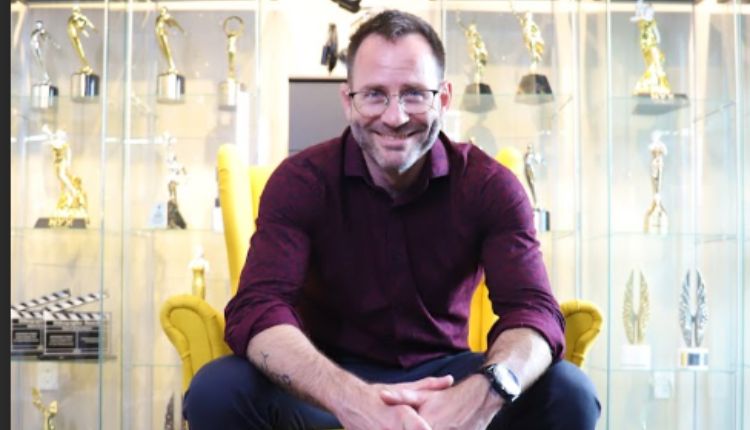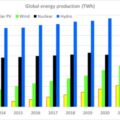Despite being an industry undergoing explosive growth, most people have never heard of scientific animation. As you read this, you might be picturing drug commercials on YouTube or sciency graphics for documentary television shows. Those are more public-facing examples, but most scientific animation is actually produced for biotechnology and pharmaceutical companies. Television graphics don’t even scratch the surface of the level of detail and scientific depth that these companies need in their videos. Microverse Studios gives us an unprecedented look at the inner workings of an animation studio focused entirely on producing intricate, highly-accurate short films about scientific subjects.
They are a unique outfit, even among scientific animation studios, in that they simultaneously focus on maintaining scientific rigor and maximizing production value. They’re a small studio, too, with around ten people on staff distributed all over the United States.
What They Do
Microverse Studios creates short films that tell very precise and detailed scientific stories about cellular and molecular biology. The most common three uses for their work are as part of investment raising campaigns for biotech startups, educational video modules for physicians that help them understand a disease that a drug treats, and videos that explain how a drug works on a cellular and molecular level.
A Virtual Studio
Because Microverse Studios is entirely virtual, they rely heavily on secure cloud tools to pass files back and forth, and use tools like Slack and Zoom to maintain internal communications. 3D animation of any kind requires an enormous amount of computational capacity, and yet unlike most studios, they have no dedicated rendering facility. Instead, they utilize specialized online rendering tools like Conductor by Coreweave.
Cameron Slayden, Co-Founder and Creative Director, says this about their virtual office:
“It allows us to be very nimble. We can select the very best talent, because we don’t have to make anyone move. Tools like Slack and Zoom make real-time communications easy and less intrusive than someone knocking on your office door. And because our rendering is all in the cloud, we never run into computational bottlenecks that might otherwise jeopardize bottlenecks. Overall, it’s a total win from an efficiency standpoint.”
Who They Are
The organization of the studio is a variation on most animation studios, with a creative director to develop the style and drive the production value, animators that create the work, and a production manager to keep everything on track. An important difference between Microverse Studios and other animation studios is that everyone with a direct creative role has an advanced degree in life sciences.
Slayden on scientific accuracy: “At every phase of production, attention to accuracy is critical. Our clients are trying to impress doctors, scientists, and investors. Any little error that gets introduced could undermine the audience’s trust in the film’s message and make the whole project a failure, so we have to make sure that everything’s perfect. The words, the images, even the way things move has to fit the audience’s understanding of the science. We have to get everything right from the start, and that can only happen if everyone touching the project has the proper education and background.”
The Creative Spark
Slayden takes a very scientific approach to the creative process, with a methodology deeply rooted in cognitive science. The pacing of animations is informed by science surrounding short term and working memory. Color choices are informed by research in vision science. Even the structure of their stories is informed by modern story structure, which Slayden describes as a “file type for the brain.”
Slayden on the creative process: “Most of the stories we tell are at a scale so small that everything is transparent to visible light. They’re also very abstract, in that the proteins and cells are these weird alien things that we didn’t evolve to naturally recognize. That means our stories present a tremendous opportunity for creativity! When we are working on a story about neurons, we don’t go looking at how everyone else has animated neurons in the past. Instead, we ask ourselves, ‘what familiar thing is a neuron like?’ Well, it’s long and stringy and it branches and tangles up with other long stringy things. What else is like that in the human experience? Roots. Lightning bolts. Jellyfish tentacles. Once we find a visual metaphor that resonates with the brand or the story we’re telling, we let that guide our design choices, and we’re off to the races.”
How They Work
They have a well-established production pipeline, refined by over twenty years of producing mechanism-of-action animations for pharmaceutical companies and platform videos for the biotech industry. Once a project comes in, the staff writer writes the script, and the creative director builds the style and storyboard.
Animators at Microverse Studios will sometimes take on a project solo, and other times will divide up the various shots depending on the project’s scale and deadline. One person is always designated “showrunner,” and they will be responsible for all of the editing and assembly of the finished product. Usually they will also undertake the lion’s share of the animation as well.
Slayden on project scale: “Most of our animations fall between 90 seconds and 3 minutes. Biotech platform videos tend to be 1-2 minutes, and mechanism of action videos tend to be 2-3 minutes. You have to respect your audience’s time, so brevity is critical. It also impacts project cost.“












